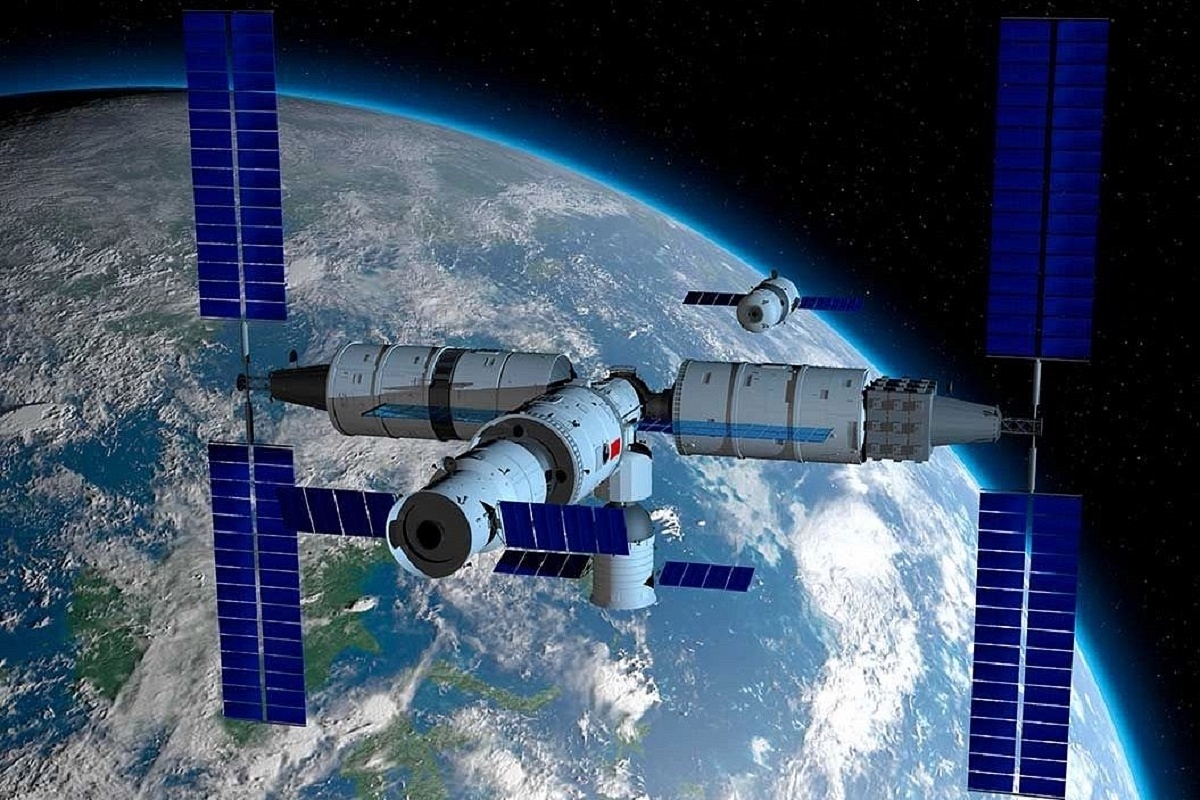News Brief
Russia Threatens To Bring Down 420-Tonne International Space Station: How Serious Is The Threat?
- NASA underplayed the threat and reportedly said, any immediate signs that Moscow is withdrawing from the ISS collaboration were not visible.

The International Space Station.
Last week, reports emerged that Russia threatened the viability of the International Space Station (ISS) after stiff sanctions were announced by US and others in response to its military campaign in Ukraine.
Rogozin's Tweets Ignite Fear
A widely circulated comment by the chief of Russian space agency Dimitry Rogozin ignited fears that the Russia-Ukraine war could have consequences for the ISS.
In a series of tweets, Rogozin said that Russia could respond to the US sanctions by letting the ISS fall from space. He said the ISS could drop over the US or Europe, or over India and China.
The ISS, a 420-tonne permanent laboratory, the largest man-made structure in space, is operated by the US, Russia and other partner countries, including Canada, Japan and several members of the European Space Agency. The facility is used for carrying out a variety of zero-gravity experiments, space exploratory studies, and technology development.
The ISS is approximately the size of a football field and travels at a speed of about 28,000 km per hour. It takes about one and a half hour to complete its orbit, and makes about 16 trips around the world in a day. The ISS's orbit, around 400-km above land, usually does not take it over most of the Russian territory.
No Propulsion Could End In An Uncontrolled De-Orbit
Since being put into the orbit in 1998, the ISS has been manned continuously. At any given time, there is a crew of six astronauts on board. Currently, seven astronauts, four from the United States, two from Russia and one from Germany, are in the ISS.
The ISS has two broad segments, each one is managed by the United States and Russia. While the US manages power and the systems that make the spacecraft habitable, Russia is responsible for the propulsion system which keeps the ISS in the pre-defined orbit.
Since the ISS is not entirely in zero-gravity space and fights a little bit of gravity, it loses energy as it moves around the earth. If the propulsion support is not there, and the ISS is left to itself, it would fall back down on the earth. Russia periodically sends thrusters that attach themselves to the ISS and impart the required momentum to keep it going.
Rogozin’s threat implied that the US and other countries would not be able to keep the ISS from falling down if Russia withdrew its support.
The ISS is the most visible part of a wide-ranging space collaboration between US and Russia and had so far remained immune from tensions between the two countries. For example, when Russia had annexed Crimea from Ukraine in 2014, it did not have any impact on the ISS collaboration.
This time too, NASA underplayed the threat and reportedly said, any immediate signs that Moscow is withdrawing from the collaboration were not visible. However, the American space agency is eyeing alternatives to keep the ISS in the orbit without Russian support.
Musk's SpaceX To The Rescue
Notably, Elon Musk, the owner of SpaceX, the largest private space enterprise which carries both astronauts as well as cargo to the ISS, came forward saying that his company could provide the required propulsion to the facility in case the Russians abandon it. On Friday (25 February), Musk tweeted his company's logo in response to Rogozin's rhetorical question about who would save the ISS from an uncontrolled de-orbit.
Introducing ElectionsHQ + 50 Ground Reports Project
The 2024 elections might seem easy to guess, but there are some important questions that shouldn't be missed.
Do freebies still sway voters? Do people prioritise infrastructure when voting? How will Punjab vote?
The answers to these questions provide great insights into where we, as a country, are headed in the years to come.
Swarajya is starting a project with an aim to do 50 solid ground stories and a smart commentary service on WhatsApp, a one-of-a-kind. We'd love your support during this election season.
Click below to contribute.
Latest